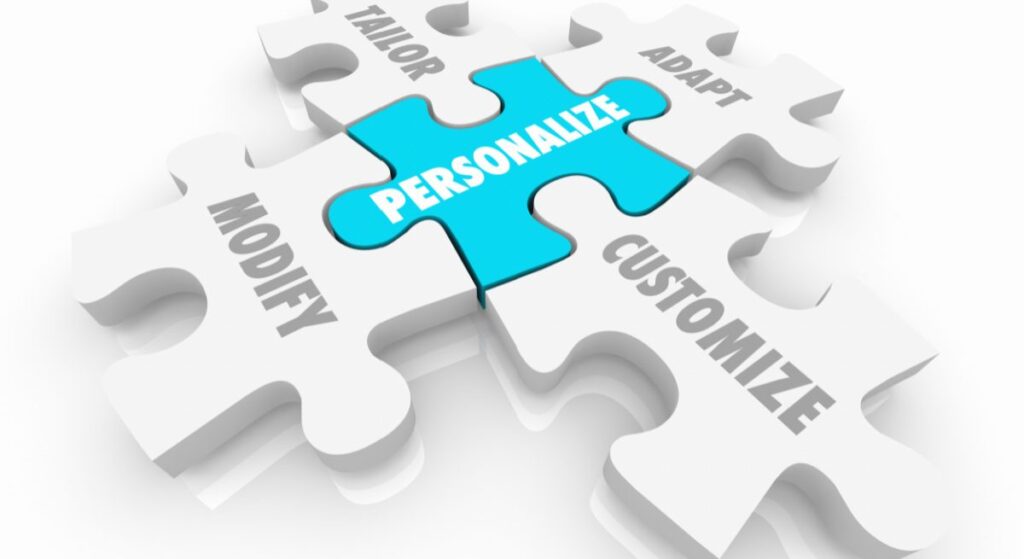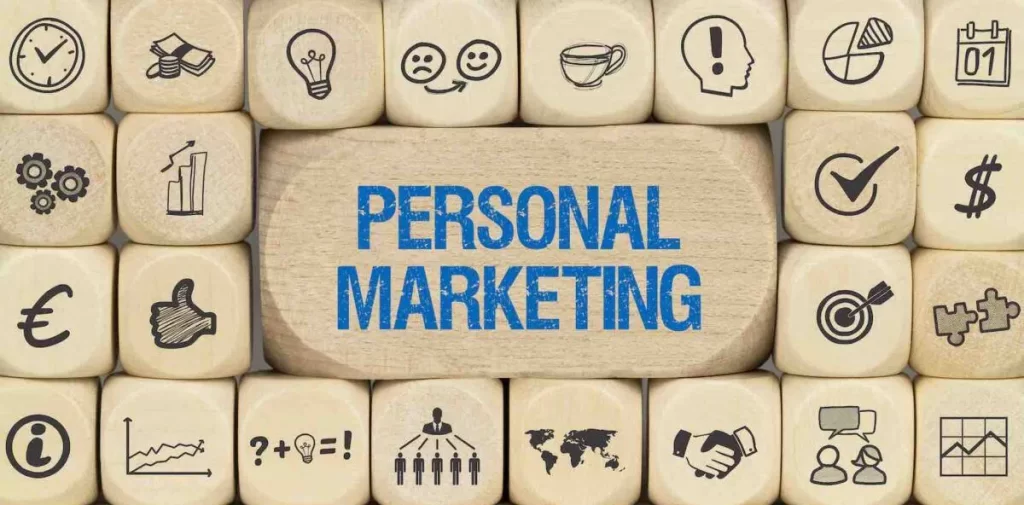
In the quest to offer bespoke customer experiences, marketers are harnessing the power of hyperpersonalization. It’s an enticing vision – the right message, to the right customer, at the perfect moment. However, the journey from traditional personalization to hyperpersonalization is filled with challenges. As we delve into examples from top-tier brands like Nike and Spotify, we uncover how they navigate hurdles, from data integration to privacy concerns, to harness the potential of hyperpersonalization. A thoughtful strategy, steady progress, and a dash of human creativity could make this lofty goal a reality.
A Playful Dive into Hyperpersonalization in Marketing
For years, marketers have been on a quest for the ultimate in personalization – the ability to tailor messages to individuals on a grand scale. While previous technology allowed for basic segmentation and a touch of personalization, hyperpersonalization offers the potential for much deeper customization at the individual level.
Thanks to advancements in data analysis and artificial intelligence, marketers are on the brink of a new era of highly customized messaging. Top-tier companies are starting to deliver personalized communications, content, product suggestions, and experiences tailored to tiny customer segments, or even a single customer.
However, despite its enticing potential, there are still hurdles to overcome on the path to fully realizing the power of hyperpersonalization. From scattered data to compliance risks, marketers aiming for more relevant and resonant customer interactions still face tangible challenges.
With a thoughtful strategy, careful execution, and accurate measurement, hyperpersonalization could move closer to becoming the ultimate tool in marketing. But it requires patience and persistence to tap into its potential while sidestepping common pitfalls. For those ready to take on the challenge, the next level of personalization is waiting.
This introduction aims to define hyperpersonalization, highlight key themes, and hint at challenges, all while maintaining a playful and direct tone. Let me know if you would like any modifications or expansions to this section.
Embracing the Power of Hyperpersonalization
For those in the marketing world, the dream of delivering bespoke messages to specific customer groups has always been tantalizing. Hyperpersonalization, as it’s known, offers the potential for individualized marketing, fueled by the latest advancements in data and artificial intelligence. However, the path to fully harnessing its power has been more of a steady climb than a sudden leap.
Yet, the allure of hyperpersonalization is undeniable–the perfect message, for the perfect customer, at the perfect time, sparking engagement and conversion. Even small strides towards this ideal have proven fruitful, leading to increased personalization and targeting over time. Marketers have sought these improvements through consistent upgrades in segmentation, recommendation engines, and customization.
Despite this, most businesses acknowledge there’s still a long road ahead. While data and technology have made significant strides, marketers still face hurdles in utilizing them to their maximum potential. Consequently, the most transformative uses of hyperpersonalization are still largely the domain of industry pioneers, rather than common business practices.
However, there’s a palpable interest in pushing personalization efforts even further. Despite the higher demands, marketers increasingly view hyperpersonalization as a lofty goal. And many seem unfazed by the obstacles that stand in the path of its full realization.
Instead of chasing sudden breakthroughs, today’s marketers seem satisfied to drive gradual improvements with the tools currently at their disposal. They realize that even small steps towards more tailored messaging can have a positive effect on customer relationships and business growth. Yet, the appeal of truly personalized one-to-one marketing continues to fuel innovation in platforms, analytics, and execution.
So, while hyperpersonalization may remain a lofty goal for marketers to continually strive for, it doesn’t have to be seen as an all-or-nothing objective. With a thoughtful strategy and steady progress in leveraging data and technology, marketers can reap substantial benefits from expanding personalization efforts. Perfection may be a pipe dream. But for many, the journey offers rewards at every stage of the process.
The Journey from Personalization to Hyperpersonalization
In the last ten years, marketing has evolved to offer more sophisticated personalization, aiming to connect with customers on a more individual level. This evolution mirrors the increasing demand from consumers for more relevant, customized communication, and the ability of brands to access more detailed data and predictive analytics.

Initially, many businesses concentrated on basic segmentation and targeting, categorizing audiences into large groups based on factors such as demographics, location, and previous purchasing habits. While this provided slightly more relevant communication than a generic approach, these segments still encompassed hundreds of thousands or even millions of individuals. Truly personalized one-to-one marketing was still out of reach.
Over time, with the advent of digital channels and the explosion of customer data, brands started experimenting with more advanced personalization strategies. For instance, some retailers began to personalize product suggestions based on each customer’s unique browsing and purchasing history. Financial institutions started to tailor credit card offers based on spending habits and credit scores. And B2B companies began to customize multi-touch nurture campaigns around known buyer preferences and challenges.
Despite representing progress, these efforts only achieved “surface-level” personalization, focusing on limited attributes. They did not fully capture the intricate nature of human behavior and motivation, resulting in communication that often felt generic rather than truly tailored.
Hyperpersonalization seeks to bridge this gap with an integrated, predictive approach. The key shift is from reactive to proactive personalization. Leading organizations now build comprehensive, 360-degree customer profiles combining demographic, behavioral, emotional, and contextual data. Using AI and machine learning, they convert this rich data into sharp insights about customer desires, needs, and probable next steps. This enables highly targeted, extremely relevant communications timed for maximum impact.
For example, Spotify creates uniquely personalized discovery playlists based on users’ complete listening histories, favorite genres, and real-time context such as time of day or activity. Netflix generates individualized homepages showcasing titles a specific viewer is likely to enjoy. Both are examples of what hyperpersonalization can achieve today, with more innovation expected in the future.
The path to this level of 1:1 marketing has taken over a decade and has required brands to constantly challenge assumptions and push personalization to new frontiers. With customer expectations rising faster than ever, even hyperpersonalization will one day seem basic. This constant pressure will continually drive the next evolution in marketing.
Conquering Challenges Towards Hyperpersonalization
Embarking on a hyperpersonalization strategy presents brands with substantial challenges. Despite the enticing potential rewards, marketers must tackle four main obstacles to transform hyper-personalization from a concept into a reality.
At the heart of this endeavor is the need for rich, accurate customer data. Machine learning algorithms drive hyperpersonalization engines, constantly refining recommendations and messaging. Yet, without a wealth of behavioral and contextual data to train these models, personalization efforts stumble. Old infrastructure, isolated data silos, and limited analytics capabilities hinder the comprehensive view of each customer needed to fuel deep personalization. Brands must invest in merging disparate data sources into a unified platform, apply structure and meaning, and then use analytics to reveal actionable insights.

The second hurdle lies in technology. Delivering personalized experiences on a large scale requires a sophisticated marketing technology stack. From data management to customer identity resolution to campaign orchestration and optimization, brands need advanced capabilities to listen, learn, and respond to customers in real-time. Many existing marketing clouds struggle when trying to scale hyperpersonalization. Transitioning to more advanced solutions may require challenging tech integrations, but the long-term benefits justify the investment.
The third obstacle revolves around talent. Extracting value from customer data demands specialized expertise – data scientists, engineers, analysts, and optimization specialists. With demand far exceeding supply, the competition for analytical and technical talent is fierce. Brands implementing hyperpersonalization should consider alternative talent models like partnerships with marketing agencies, contractors, or embedded teams. Central governance of data science also helps concentrate specialized resources on the most valuable efforts.
Lastly, brands must navigate evolving data regulations and consumer privacy expectations. By demonstrating responsible data stewardship and transparency, they can maintain customer trust. This involves implementing robust data governance practices, providing notice and control to customers, and securing explicit consent where required. With careful privacy and compliance strategies, brands can respect consumer rights while still personalizing responsibly.
While the pursuit of marketing’s ultimate goal certainly encounters hurdles along the way, brands willing to face these challenges can gain a significant competitive edge through hyperpersonalization. However, this quest requires patience, investment, and commitment from across the organization. For those willing to take on the challenge, substantial rewards are in store.
Embarking on the Journey of Hyperpersonalization
Embarking on a hyperpersonalization marketing strategy might seem like a tall order, but it’s entirely feasible with careful, step-by-step actions. By systematically developing foundational skills, brands can lay the groundwork for more sophisticated personalization in the future.
Start by looking inward. Examine your current data and technology to pinpoint obstacles hindering one-on-one engagement. Seek methods to dismantle data silos and merge customer data into cohesive profiles. Clean, interconnected data is the driving force behind pertinent messaging.
Then, begin on a small scale with a proof-of-concept campaign aimed at a tightly defined segment. This concentrated approach allows you to test capabilities and gather insights before broadening your efforts. Use the increase in engagement and conversion as a compass for your strategy.
As you expand your efforts, remember the importance of the human touch. Hyperpersonalization depends on merging AI-generated insights with human supervision and creativity. Establish processes that enable teams to work together effectively. Also, foster a culture of testing and learning, with a focus on optimization.
While the journey to hyperpersonalization differs for each brand, taking measured steps rooted in evaluation and learning speeds up progress. With the appropriate strategy and culture, enhanced personalization can transition from a lofty goal to a tangible reality.
Hyperpersonalization at Play
Top-tier brands show that hyperpersonalization, though demanding, can foster significant customer relationships when implemented with care. Take retail titan Nike for example.
Armed with heaps of customer data and sophisticated AI technology, Nike created personalized product suggestions and bespoke messaging campaigns. The outcome? A 10% rise in average order value in their apps.
However, Nike also understands the value of moderation. As one executive stated, “our aim is not to be intrusive” – a reference to steering clear of blatant privacy violations. Therefore, Nike concentrates more on wider customization based on larger customer groups. This measured approach gained customer trust while still enabling personalization on a grand scale.
For Spotify, the music streaming service, their well-liked personalized playlists combine individual user data with human supervision. As one product manager put it, “algorithms take you halfway, but you still need a human touch.” This mixed model generated highly pertinent playlists that thrilled users. Adoption of these playlists skyrocketed over 400% in two years.
These examples show that when done with consideration, hyperpersonalization can yield tremendous value – from enhancing business metrics to creating authentic connections. However, they also underscore the necessity for subtlety, ethics, and humanity, even in a data-centric era. With caution, brands can achieve that fine line between personalization and privacy.
Hyperpersonalization in marketing is a transformative tool, demanding a blend of data mastery, technological prowess, and human touch. As brands navigate this personalized terrain, the journey, though challenging, promises substantial rewards: enhanced customer engagement, authentic connections, and a competitive edge in the ever-evolving marketing landscape



